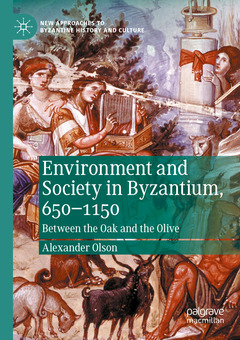Environment and Society in Byzantium, 650-1150, 1st ed. 2020 Between the Oak and the Olive New Approaches to Byzantine History and Culture Series
Auteur : Olson Alexander

Illuminates Byzantines' relationship with woodland between the seventh and twelfth centuries
Explores shifting economic strategies, environmental change, and the transformation of material culture throughout the middle Byzantine period
Argues that Byzantines' relationship with their ecology was far from static, and that Byzantines' decisions had environmental impacts
Date de parution : 11-2021
Ouvrage de 258 p.
14.8x21 cm
Date de parution : 11-2020
Ouvrage de 258 p.
14.8x21 cm



